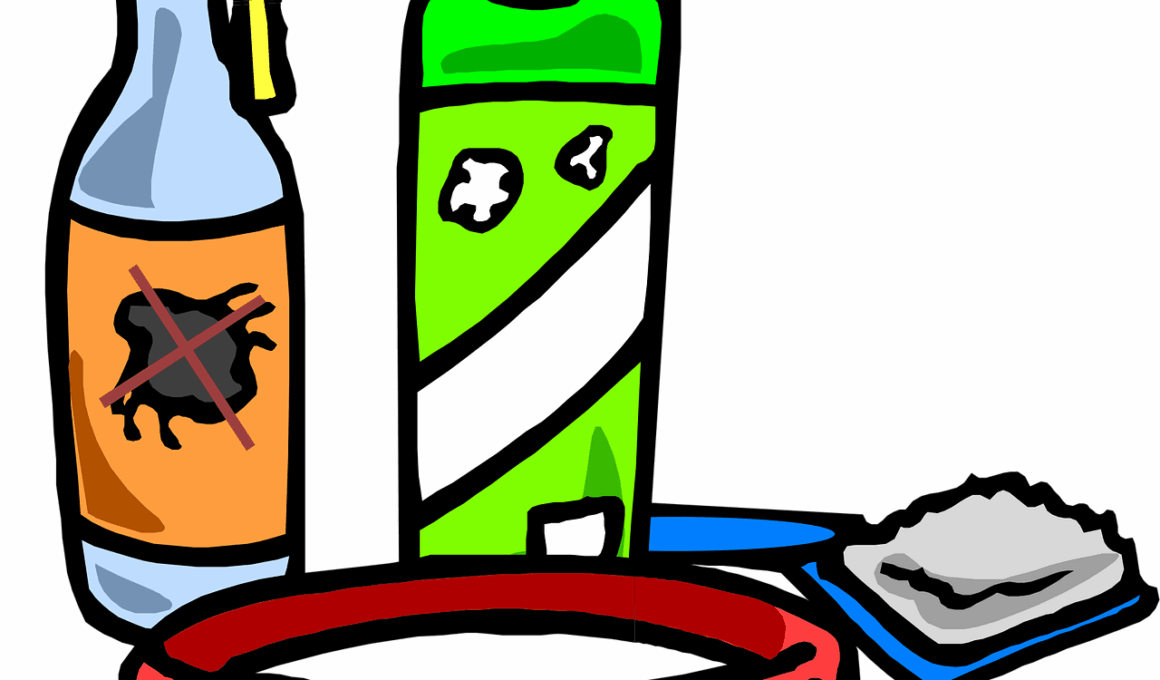Desensitization Techniques to Ease Dogs Into Regular Parasite Control
When it comes to keeping your dog free from parasites, routine treatment is essential. However, many dogs may resist this process due to fear or discomfort, making it crucial to employ effective desensitization techniques. By introducing treatments gradually and positively, pet owners can help their furry friends remain calm and compliant. Start by establishing a relaxed environment and exposing your dog to the treatment in small doses. This could mean letting the dog smell the medicine or treatment container without directly applying it at first. As they grow more accustomed to the smell and sight, moving to light contact should be the next step. Always reward your dog with praise or treats after each positive interaction. This positive reinforcement encourages them to associate the treatments with something pleasant, fostering a more cooperative demeanor over time. Be patient during this process, as some dogs may take longer to desensitize. Tailored approaches based on your dog’s temperament can further enhance effectiveness, thanks to the owner’s understanding of their pet’s unique sensitivities.
Another key element in the desensitization process is the establishment of a consistent routine. Dogs thrive on meaningful habits, and when parasite control becomes part of their daily life, it no longer feels like a burden. Consistency can help eliminate anxiety by creating predictability. Choose a specific time, such as after a walk or play session, to administer treatments regularly. This approach not only normalizes the experience, but also minimizes the likelihood of stress. To further enhance the experience, consider incorporating interactive elements like games or play sessions. For instance, you might introduce a favorite toy during treatment time, allowing your dog to associate fun with the process. If treatments are to be administered topically, ensure your hands are very gentle and calm; this helps to lessen physical anxiety. Equally important is having your supplies organized beforehand, as a chaotic environment can heighten stress. All of these steps foster a more supportive atmosphere that can greatly assist your dog during an otherwise disruptive routine.
Utilizing Positive Reinforcement Techniques
Positive reinforcement is a powerful tool in the world of dog training, more so during desensitization. Using treats or toys as rewards after each successful interaction can encourage calmness and compliance. The principle is straightforward: reinforce desired behavior with positive rewards. For example, have small, easily digestible treats ready to offer immediately after your dog accepts a treatment without fuss. This conditioning encourages the dog to cooperate in future situations as they link the experience to positive emotions and outcomes. It is essential to start by rewarding even minor progress, such as calmness in the presence of the treatment. Gradually, you can aim for bigger accomplishments, such as allowing handling of the product or application. Over time, these small achievements accumulate, creating a bigger picture of comfort and trust in you as a provider of care. Additionally, using enthusiastic voice tones and physical affection during this reinforcement solidifies their positive experiences. Keep in mind variability in the types of rewards; discovering what your dog craves most can significantly impact their enthusiasm to cooperate and adapt.
As with any training process, consistency and patience are vital components in desensitization efforts. Remember that every dog is unique, possessing its own set of preferences and fears. Therefore, monitoring their reactions will guide you on how to proceed. If your dog appears overly distressed, it might be necessary to slow the process down. Always ensure that desensitization efforts are gradual and fitting to your dog’s comfort level. This might involve breaking down tasks into even smaller steps or taking breaks when needed to reduce any anxiety. In the case of extremely fearful dogs, consulting with professional trainers or animal behaviorists can offer further insights tailored to your situation. Lastly, changing the approach in response to your dog’s reactions can demonstrate your commitment to their well-being. Keep an eye on their body language, which will signal when they feel comfortable or invite adjustments as necessary.
Maintaining Ongoing Familiarity With Treatments
Familiarity plays a critical role in ensuring that your dog remains comfortable throughout the parasite control routine. Part of this entails regularly providing them with the treatments even during breaks or off-seasons. For instance, do not wait until the next scheduled treatment to engage your dog with the products used—toys, grooming tools, or other supplies can help to maintain that familiarity. Allowing your dog to interact freely with these items creates association and advocacy. The more they encounter these products in neutral or positive contexts, the less they will associate them with discomfort. Consider providing opportunities for exploration and interaction away from the stressful application phase. Ensure it is presented in playful and enjoyable scenarios rather than viewing it simply as a treatment. These interactions can range from hiding treats within container items to gentle tug-of-war games with them, always steering clear of associating the treatment purely with negative experiences.
Additionally, engaging other family members in the process can lighten the atmosphere around parasite control for your dog. When they see other pets or family members actively participating in treatment routines, it can foster a sense of normalcy and camaraderie. Dogs are intuitive and respond to their environments—including the reactions of their human companions. If they notice peers being treated without apprehension, it may encourage them to emulate that behavior. Involving the entire household can also create memorable and fun experiences, reducing the focus solely on treatment itself. Create playful group effort days dedicated to parasite control where each member can take turns and provide treats; this contributes to viewing the process as a community effort. Recognizing and addressing your dog’s apprehensions collectively can pave the way for an easier journey towards cooperation and adaptability.
Concluding Insights on Desensitization
In conclusion, the desensitization of dogs towards regular parasite control can be significantly beneficial in the long term. By implementing gradual exposure, positive reinforcement, and maintaining routine familiarity, you effectively set a foundation for better cooperation. Establishing predictable routines or integrating positive associations like play can mitigate anxiety significantly. Patience is paramount, as the journey toward comfort is as much about the dog’s pace as it is about yours. Each dog is different; hence it’s vital to remain flexible and adaptive in your methods. Seeking professional guidance can also support your process for dogs who are particularly sensitive or challenging. Above all, a loving and patient approach will foster a healthy relationship between you and your pet, ensuring that parasite control becomes a non-stressful part of their life. Trust and connection developed during this training can enhance your canine’s overall health and well-being, reinforcing the importance of collaborative care between owner and dog.
Engaging in regular parasite control is not just about treatment; it’s also about understanding your pet’s behavioral needs. Successful desensitization contributes to a harmonious relationship, reducing the chances of resistance during the processes involved in parasite control. Use these techniques as your foundation, so that your beloved pet can enjoy and engage positively with their treatments rather than view them as something stressful or unpleasant. With patience and consistency, you can ease your dog into a healthy routine; a happy dog leads to happier sessions of care. Always remember to reward progress, to observe for improvements, and to adapt as necessary to ensure the bond grows stronger through your pet’s gradual acceptance of treatment. Ultimately, your dedication to understanding and addressing your dog’s fears and concerns will solidify their well-being while strengthening your relationship with them.


